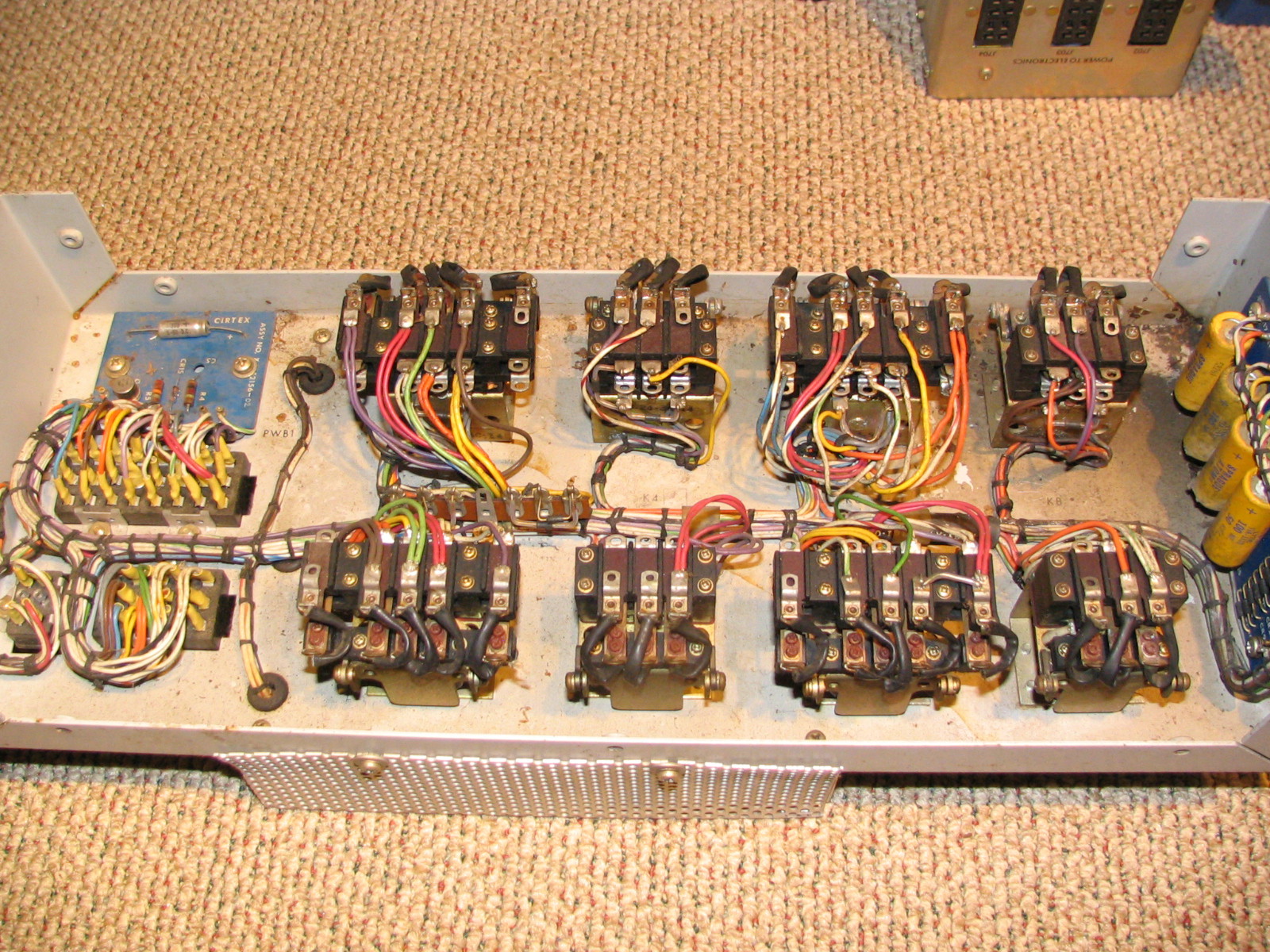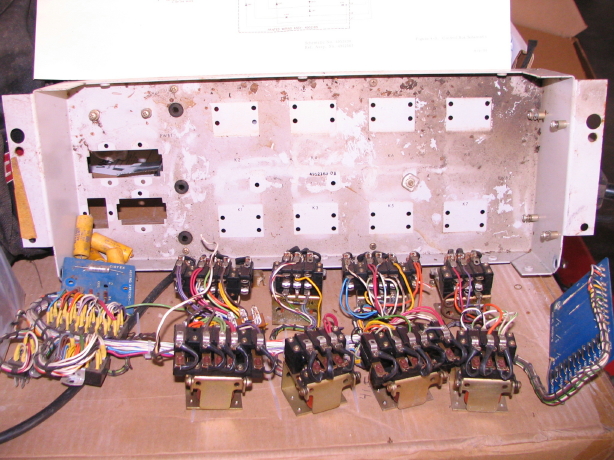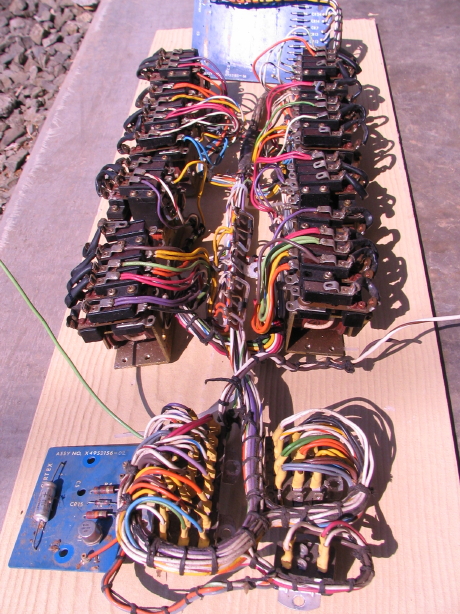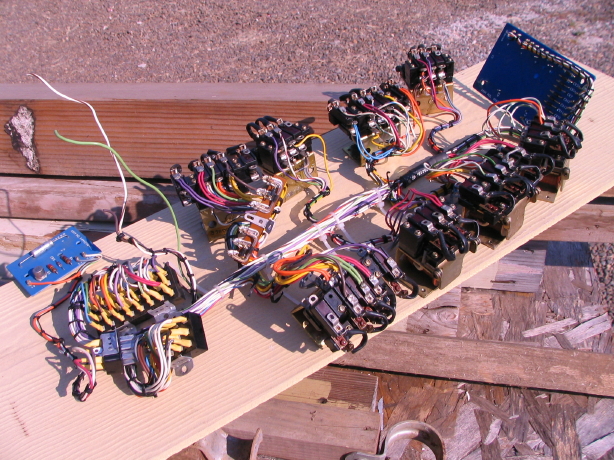sweetbeats
Reel deep thoughts...
Having now read that 1968 AES Preprint in its entirety I can tell you that I am of the firm opinion that the "24-track" machine (figure 1 on page 7 of the pdf) is NOT an operational machine but a mock-up.
The description of it doesn't match the production MM-1000 units in so many ways.
Under the "Console" paragraph on page 2 of the pdf it indicates that all electronics and controls are mounted below the control panel and we know the production 16 and 24-track MM-1000's weren't that way, and even some of the 8-track machines left the factory with all 8 electronics modules mounted in an overbridge for future conversion to 16-track using the empty bays below. The description of the electronics starts in the "Electronics" paragraph on page 3, and what they are describing is closer to what we didn't see until the advent of the MM-1100. It sounds to me like the idea of electronics drawers was there, but the use of the 440 electronics on the Mirasound AG-1000 stuck on into the production of the MM-1000. The MM-1100 and MM-1200 had 440 type amp cards loaded in pull-out drawers and indeed all 24 channels on a 24-track machine fit below the control panel. The piece that did come to fruition on the production MM-1000's was the 8-channel Sel-Sync modules described at the bottom of the second paragraph on page 4 of the pdf, though they weren't in "trays" but in 2U modules mounted above the electronics in the lower left rack. The guts of the Sel-Sync modules basically remoted components already present in the 440 electronics modules, but made the screwdriver adjusted controls accessible at the front of the machine rather than at the back of each electronics module which would be terribly cumbersome with the electronics mounted in the lower racks of the console.
Another interesting mention is on page 5 under the "Accessories" heading...the full-track earase head assembly...that assembly is pictured on both the "24-track" machine as well as the Mirasound AG-1000 in the document...that is nothing more than the full-track erase head assembly off the VR-1100. That assembly was removed from the Mirasound machine at some point, if it was even ever ON the machine when it was delivered as I have yet to see a pic of it at Mirasound with that assembly there...this AES paper is the first time I've seen that assembly on that machine. At any rate I have a hunch it made a convenient mount for an incoming guide to the head block.
Also, no production MM-1000's had a tip-up transport plate. That was a quad VTR thing...can't imagine ever getting it tipped up. That plate with the components mounted has got to be in excess of 150lbs...
The description of it doesn't match the production MM-1000 units in so many ways.
Under the "Console" paragraph on page 2 of the pdf it indicates that all electronics and controls are mounted below the control panel and we know the production 16 and 24-track MM-1000's weren't that way, and even some of the 8-track machines left the factory with all 8 electronics modules mounted in an overbridge for future conversion to 16-track using the empty bays below. The description of the electronics starts in the "Electronics" paragraph on page 3, and what they are describing is closer to what we didn't see until the advent of the MM-1100. It sounds to me like the idea of electronics drawers was there, but the use of the 440 electronics on the Mirasound AG-1000 stuck on into the production of the MM-1000. The MM-1100 and MM-1200 had 440 type amp cards loaded in pull-out drawers and indeed all 24 channels on a 24-track machine fit below the control panel. The piece that did come to fruition on the production MM-1000's was the 8-channel Sel-Sync modules described at the bottom of the second paragraph on page 4 of the pdf, though they weren't in "trays" but in 2U modules mounted above the electronics in the lower left rack. The guts of the Sel-Sync modules basically remoted components already present in the 440 electronics modules, but made the screwdriver adjusted controls accessible at the front of the machine rather than at the back of each electronics module which would be terribly cumbersome with the electronics mounted in the lower racks of the console.
Another interesting mention is on page 5 under the "Accessories" heading...the full-track earase head assembly...that assembly is pictured on both the "24-track" machine as well as the Mirasound AG-1000 in the document...that is nothing more than the full-track erase head assembly off the VR-1100. That assembly was removed from the Mirasound machine at some point, if it was even ever ON the machine when it was delivered as I have yet to see a pic of it at Mirasound with that assembly there...this AES paper is the first time I've seen that assembly on that machine. At any rate I have a hunch it made a convenient mount for an incoming guide to the head block.

Also, no production MM-1000's had a tip-up transport plate. That was a quad VTR thing...can't imagine ever getting it tipped up. That plate with the components mounted has got to be in excess of 150lbs...
Last edited:







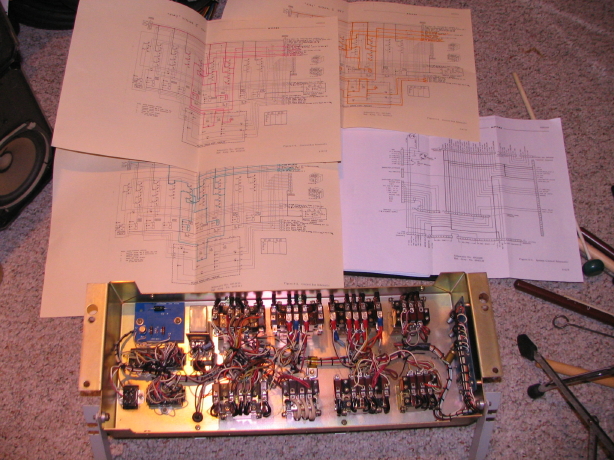

 'Cause its not RIGHT!
'Cause its not RIGHT!